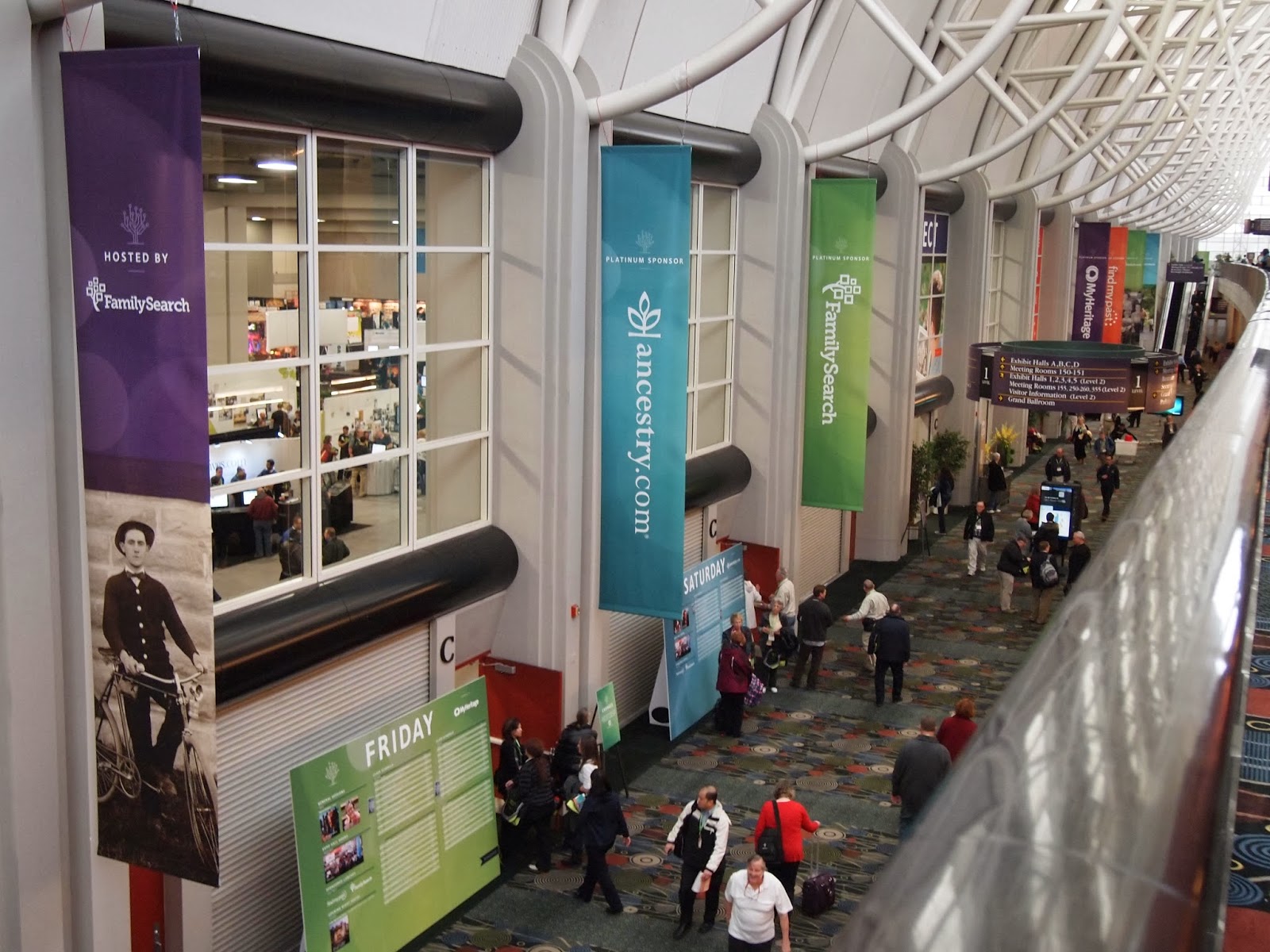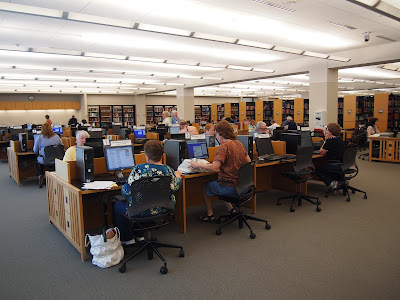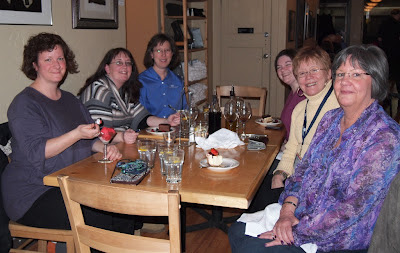In the past, I have written about serendipity in genealogy, and for some reason, the past few weeks have bombarded me with serendipitous moments. I would almost call it an onslaught. When one specific issue keeps coming at me without my seeking it out, I pay close attention.
I have always been a little fascinated by African American history. Not to the point of digging much on my own, but if a story or article presented itself, I read it....I cannot explain the draw, but it's been there. Growing up in Ohio, with family from both sides of the river, I had one foot in the north, and one in the south. As a researcher, I have not found slave owners in my family, but that is only a matter of generational reach. For those ancestors in the south without slaves, they were simply too poor to own any. When the Civil War came about, they took up arms to readily fight for the Confederacy. I am certain it is only a matter of time before I encounter enslaved individuals in my family. My point here, is that I have not had a personal family draw to this issue...the personal connection lies in the troubling existence of racism in my family on subtle, insidious levels. As with many northern families who smugly think they are not affected by racism, cue bubble and pin. Pop!
There is much more to that personal connection, but I'll leave all of that for another time. Today I just want to speak to the issue of AA, POC, BH research in the genealogy field. Let me outline some of the serendipitous moments that have hit me upside the head lately:
1. At the end of March, genealogist Valerie Hughes posted a couple of blog posts about the importance of adding slave records to your family trees. She asked a Facebook audience if this was something people should do...and the response was overwhelmingly positive.
2. Even though I did not have this in my own family to report (yet), I had come across many entries over the years regarding folks of slave descent - in various documents at the Kentucky Historical Society. Every time I encountered one, I always had a moment of excitement, seeing another name, another identity....followed by despair, because I had no earthly clue what to do with this information....and I usually just put the film away. Sigh....this happens more often than I would like to admit.
3. I watched a movie about Holocaust survivors who had lost touch after the War because they thought each other dead. Decades later, when one of them witnessed proof that the other was still alive, she called the Red Cross who accessed his "case file" to see if they should re-open it in the hopes of connecting them back to their family. I was saddened the U.S. had never made this type of effort at the end of slavery, to assist with family members connecting back to each other.
4. Number 2 made me think about Valerie's encouragement, and I began entertaining thoughts about slave mapping. Was it possible to record the name of every slave mentioned in a county's document collection? I was thinking on a county-wide level as a start. Pull every will, record the names mentioned. Pull every court doc, record the names, etc. While I was pretty sure it was possible, what about the white owners? If we recorded every slave named in wills and court docs, would that help with anything? Since white names were also duplicated in counties, wouldn't we need to map the white owners, make profiles of them and then link the recorded names to these profiles? And what if it was due to an estate dispersal? If the slaves were transported across county or state lines, did that remove the trace? My eyes were crossing already.
5. A co-worker had left a book on my desk as a review copy for Kentucky Ancestors...it was a compiled list of slaves mentioned in Kenton County, taken from the court records. OK, proof it is possible, sitting on my desk. Freaky! (I have been aware of other transcription collections produced over the decades, but a fairly comprehensive one plopped on my desk at that moment...caught my attention.)
5. After talking with said co-worker about my latest thoughts, we entertained Valerie's "tree" concept. Despite the complex emotions on both sides, should we as genealogists be pushing the family tree software designers to add a new relationship related to slavery? As we got excited, claiming we were going to change the genealogy world, our boss came in with some reason....how would you categorize this type of "relationship"? Ownership, slave of, enslaved by? Sigh....good point...so, now what? We both decided that just a "note" in the family tree was not enough. We need something more significant...more quantifiable. Still have no solution - ideas?
6. Just in from mowing the lawn Sunday and passing the time while my Dad looked at my heating/cooling system (on the blink again), I picked up the iPad and clicked on Twitter. At that moment, True Lewis had posted a link about an ongoing podcast/live call-in show from AAGSAR (African American Genealogy and Slave Ancestry Research). I re-tweeted it and then tuned in...wow, amazing issues being brought forth about how the genealogy profession treats AA records and research. Also, how engaged are we? How do we actively help families re-connect? As a field, are we diverse? Conclusion, not really, and change is long overdue.
So....what does all of this mean, and what are the next steps?
Questions I have for myself AND the genealogy community:
1. As genealogists, what can we do to help? Even though we all seem to have tons of projects on our plate, I don't believe this is a project issue, but rather a support issue. What changes do we need to make in mindset and attitude to effect lasting change and inclusion across the board?
2. A push for more diversity in the genealogy field is about to take place from the AAGSAR crowd, particularly in the national conference arena. How do we support this? What can we do to make sure this issue comes to the forefront of dialogue?
3. Is some of the diversity vacuum in our field a result of terrible, yet comfortable racist habits, or are they amplified by the silo nature of genealogical research? When we host AA speakers for our genealogy programs, they are more attended by the AA community, and much less attended by our white members....However, this is also true of specific ethnic research. We hosted a speaker with heavy Swedish roots and the numbers were VERY low because many dismissed this as a session that did not apply to their research. It is a natural excuse to not attend one session if you do not feel it will cover your area of research - even though MOST have reported that every session teaches them some methodology that has proven helpful in their own journey. NOT making any excuses, but how to we dig deep into the motivation behind behaviors?
4. As an area of research, I have encountered several labels for African American research...as I mentioned in the intro warning...is there a preferred term I should be using when talking about this branch of research? Looking for all of them in Twitter is enlightening. Would a unified consistency help in this area... not only for discussion but for written works and websites, etc?
5. The goal of AAGSAR is to encourage more sharing of AA stories and research. I love the concept that lurkers are not welcome - you have to PARTICIPATE in order to belong. They ask members to create a social media account of some kind for the express purpose of sharing their research and family stories - hopefully blogs. As mentioned on the podcast, how to we include, encourage, and promote these blogs throughout the community?
6. OK, recording names of those enslaved....I have seen several attempts from various state or regional organizations. All are wonderful databases. But....if we simply record names without enough context, without the family connections (both white and black) are we keeping the chains of bondage in place? Are we locking the information away? Here's what I mean...how does a researcher access their family roots? Without the traditional paper trail that white families are privileged to have access to, how would slave descendants find their family? Do they go back to the 1870 census, find a location and then try to mine the local records for more clues? Death record clues of birth and parentage? I always teach my session attendees to include the local history in your research to put your family history into context. If slave descendants are not allowed to place their ancestor in family/local context, is it almost a blind, disconnected search? If we pushed for more family context in the family tree software, would it help more families connect to each other? Would that lead to more information, and additional links in the family chain?
7. A few years ago, the African American Genealogy Group of Kentucky got started. The first statewide AA genealogy group in Kentucky. That too was a serendipitous moment. I had gotten up early on a Saturday morning (I don't get up early on my days off EVER if I can help it.) after reading about a lost AA community that was being resurrected in my county by Shirl Marks. I had stumbled upon it in the paper the evening before while out to dinner with the parents. My Dad had picked up the local paper, which he NEVER does. I read the notice about the talk at the local library, and went because it sounded fascinating. The following program was the second meeting of AAGGKY. I met people there that day that I have remained involved with and admire greatly! A few have even become good friends. That day as I volunteered to help them with start-up activities (web site, blog, etc) their President Sharyn Mitchell looked at me and thanked me for my help, and then said "Are you going to be there for us?" For a minute I was confused....I had just volunteered to help....but I quickly understood. Was I there to pay lip service, or was I going to come through with my promises of help? I think that is a question we can ask ourselves. Are we going to pay lip service, or are we ready to change things? I would love to see new chains of friendship and family forged to overcome the ugly chains forged in our history.
One last note about timing and relationships: In Summer 2012, Pam Brinegar wrote an amazing article for the NGS Magazine.1 It was about a female slave owner in Lexington who had made provisions for her slaves to not only be freed upon her death, but to inherit her entire farm as a means of allowing them to build a community and financial security in the 1850s. At the time this article was published, the KHS library was actively researching a new acquisition of letters written by enslaved and free African Americans during the 1840s ans 50s. The family connections ran from Lexington, through Hopkinsville, to Mississippi. We had just obtained the letters the month before...and as I read Pam's account, I caught a Hopkinsville connection to the woman in the article. It turns out, that one of the letters in our collection, addressed to his family in Hopkinsville, was written by a former slave announcing his newly obtained freedom in Lexington after the death of his owner. That owner was the woman Pam had been researching. Through Pam's research, we were able to pinpoint the women in Ferdinand's lineage and even found him in a Fayette County court document listed as a toddler years earlier. Talk about serendipity, or something greater....Not only was he declaring his freedom, but the research proved that despite the ugliness of slavery, we are all family. In many cases, by blood, and in others simply by sharing nationality and history. The more we learn about how we are connected, the more we can build strong family ties. Which means, the responsibility lies with all of us to make this change happen.
"Dear Uncles, I am Free.." Ferdinand Robertson [Robinson], Lexington KY, 1850
1. Researching nineteenth-century African American women, by Pamela Lyons Brinegar, CG; NGS Magazine, Vol. 38, #3; July-September, 2012.





.JPG)







































































